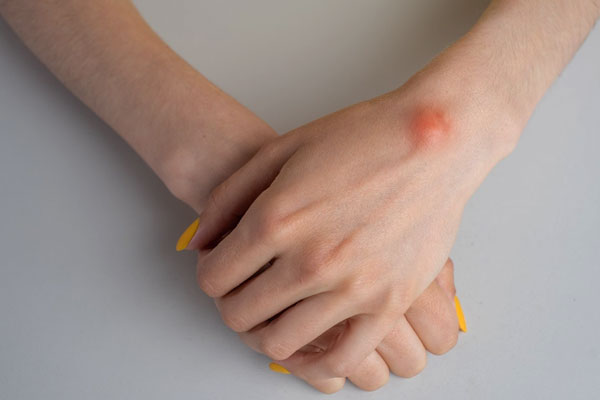Excision of Soft Tissue or Cyst
Soft tissue cysts are non-cancerous soft tissue masses that develop in tendons or in the tissues surrounding your joints. They are normal and can happen anywhere in the body. In any case, the normal locales incorporate the ligaments of the hands, wrists, lower legs, and knees.
The reasons for the pimple are obscure; however, they are probably going to be caused by a recurrent injury in the impacted region or joint. Conditions like osteoarthritis were additionally observed to be related to the improvement of the sores, as individuals with the condition are in many cases found to have blisters in the joints of the hands or behind the knees when they are impacted.
They come in different sizes, and most of them may not deliver any side effects. Such blisters require no treatment, and they disappear all alone. In any case, a few kinds of pimples might require careful evacuation when their reality is unsettling. They might press the nearby nerve, causing pain, muscle shortcoming, or obstruction with joint development when they really do happen in joints. Now and again, they might repeat even after a medical procedure.

Assessment
The soft tissue pimple should be completely assessed for an exact determination. It incorporates a coordinated course of actual assessment and imaging studies, along with a tolerant history. In the event that the finding is as yet hazy, a biopsy might be prescribed to assess whether the blister is dangerous or non-carcinogenic. It includes getting a little sample of the tissue with the assistance of a fine needle or needles and assessing the cells under a magnifying lens. A careful assessment of the type of growth helps with better administration.
Signs for excision
Treatment for sores depends on the kind, area, and side effects. Treatment isn't required except if they cause ponderous side effects. As a rule, they are best controlled through moderate medicines like icing. Extraction of the sore is thought about when
- It is causing pain.
- There is a corrective concern.
- It both developes and impedes joint movement.
- It pushes on a nerve, vein, conduit, or other essential organs.
How would I plan for the medical procedure?
- Inform your doctor about your current medications and allergies.
- Your primary care physician might suggest that you quit taking medications like headache medicine, as they might increase your risk of draining during or after the procedure.
- Try not to smoke no less than six to about two months before a medical procedure, as it might create breathing issues and postpone recuperation.
- Adhere to the guidelines about taking the endorsed medication upon the arrival of the system.
- Adhere to the directions with respect to eating and drinking before entering the system.
During the procedure
- The procedure is performed under broad or local anesthesia depending on the location of the cyst.
- A small incision is made on the skin.
- The cyst is located and removed alongside its root (a part of cyst connecting to the tendon).
- The incision is stitched and bandage is placed on the impacted area.
- Surgical removal of the cyst often results in scar, the size of which depends on size of cyst and several other factors.
Post-surgical care
- You may need to stay in the hospital for at least a night after the surgery, which may extend depending on the invasiveness of the procedure.
- Follow the activity restrictions suggested by the doctor.
- Tubes may be inserted at the excision site to drain fluid that may build up around the wound.
- Pain medications and antibiotics are recommended to prevent infection.
- You may be advised to rest the treated part and keep it elevated as much as possible to avoid swelling.
- You may have to revisit the hospital after one or two weeks, to get the stitches removed.
- Depending on the location of the surgery, you may be recommended to start physical therapy to enhance recovery process.
What are the complications of the procedure?
The possible risks that are similar to any other surgery and specific to excision of the cysts may include:
- Anesthesia
- Infection
- Bleeding
- Damage of the nearby nerves or blood vessels
What is the prognosis of the procedure?
Surgical removal of cysts usually does not have any complications or side effects. Pain and different side effects decline impressively during the underlying time frame after extraction. The opportunity for repeats is lower with the expulsion of pimples compared with different medicines.